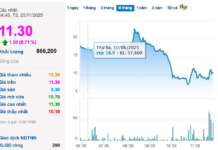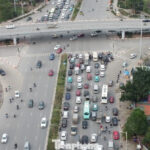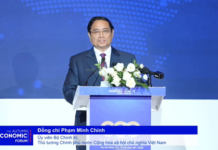Incomplete Beltway and Overloaded Expressway
According to the Ho Chi Minh City Department of Construction, the city has three planned beltways: 2, 3, and 4. The Beltway 2, spanning 64 km, is entirely within Ho Chi Minh City, but only 54.7 km has been invested so far. The remaining sections, totaling 11.3 km, including the An Lac – Nguyen Van Linh (5.3 km) and Phu Huu – Pham Van Dong (6 km) segments, remain unconstructed. As a result, the Beltway 2 is not yet a closed loop.
Beltway 3, with a length of over 89 km and a scale of 6-8 lanes, has only seen the completion of a 16 km section through old Binh Duong, while the remaining 73 km is still under construction. Beltway 4 has also just been approved by the National Assembly, with construction expected to commence in 2026.
In contrast, the Ho Chi Minh City – Long Thanh – Dau Giay Expressway, stretching 54.9 km (with approximately 12 km within Ho Chi Minh City), is designed with a scale of 6-8 lanes. Currently, only Phase 1 with four lanes (26.5 m wide) is operational. The Ho Chi Minh City – Long Thanh section is already overloaded, and the expansion to Phase 2 according to the planning scale is underway. The Ben Luc – Long Thanh and Bien Hoa – Vung Tau expressways are also under development but not yet completed, leaving inter-regional transportation heavily reliant on national highways.
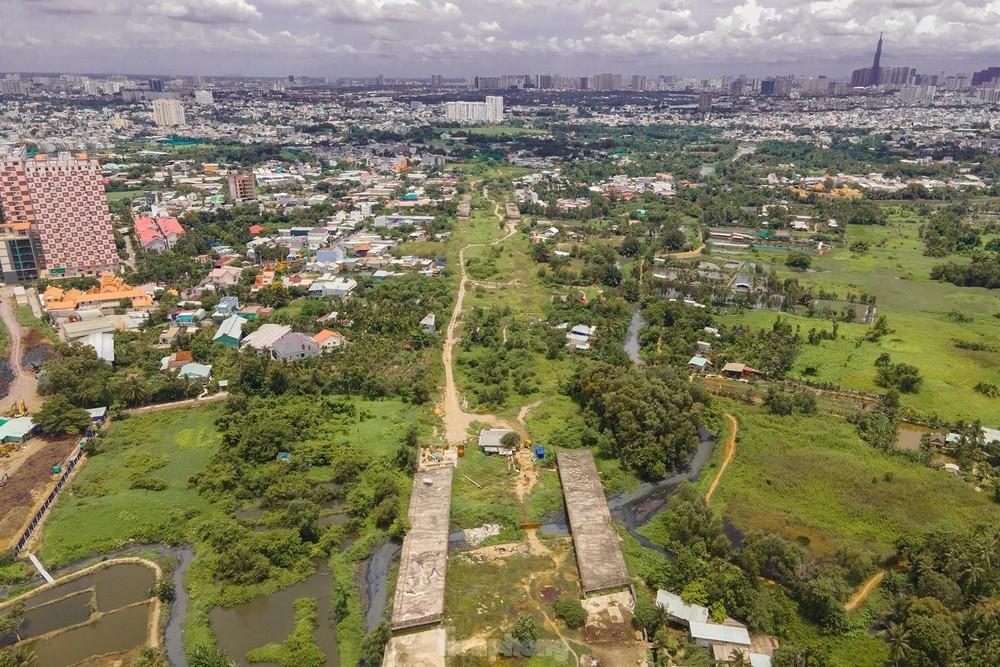
An unfinished section of Ho Chi Minh City’s Beltway 2. Photo: Pham Nguyen
Nonetheless, the national highways serving as radial roads and the city’s main gateways have not been upgraded and expanded as per the planning scale. With their narrow cross-sections (2-4 vehicle lanes) and high traffic volumes, these highways are perpetually congested (e.g., National Highway 1 and National Highway 13), failing to meet transportation demands and frequently causing traffic jams that impact the city’s socio-economic development.
Provincial roads, which are crucial for connecting the city’s gateways, particularly in the northwest region, also face challenges. For instance, Provincial Road 15 is 41 km long, but its pavement is only 5.5-6 m wide, inadequate for the growing transportation needs. Provincial Road 8, which connects the Cu Chi industrial parks with the Long An (now Tay Ninh) industrial parks, has only been partially widened.
One of the most significant weaknesses of Ho Chi Minh City’s infrastructure is its railway system. The network still primarily uses the 1,000 mm gauge, resulting in low speeds, outdated facilities, small cargo and passenger stations, and a lack of integration with roads and seaports.
The city lacks a direct railway link to the Cai Mep – Thi Vai port, the leading logistics hub in the south. Container transportation to the port currently relies on National Highway 51 and the expressway, increasing the burden on the road network.
While the National Railway Network Planning includes the new Ho Chi Minh City – Thu Dau Mot – Chon Thanh and Bien Hoa – Vung Tau routes, they have not been implemented. The Ho Chi Minh City Department of Construction attributes this to a lack of funds and unattractive PPP mechanisms to attract investors.
Developing a Multi-Modal Transportation Network
According to the Ho Chi Minh City Department of Construction, the city will accelerate the completion of Beltways 3 and 4 to enhance inter-regional connectivity in the coming years. It will also develop strategic expressways (Ho Chi Minh City – Moc Bai, Ho Chi Minh City – Thu Dau Mot – Chon Thanh) in conjunction with the upgrading of vital national highways (such as National Highway 13, National Highway 22, and National Highway 1).
Simultaneously, the city will construct strategic bridges to alleviate traffic bottlenecks, such as the bridge on DT.745 connecting Provincial Road 15 in Cu Chi, the Tan An Bridge linking DT.741 to the planned road along the city’s riverfront (old), and the Vinh Phu Bridge connecting LKV11 (Thuan An) with Vo Thi Thua Street (An Phu Dong Ward).
Regarding railways, the focus will be on developing the high-speed North-South railway section between Ho Chi Minh City and Nha Trang, the Bien Hoa – Vung Tau railway for cargo transportation to seaports, and exploring the possibility of a railway connection between Ho Chi Minh City and Long Thanh International Airport, as well as industrial cities in Binh Duong and Ba Ria – Vung Tau.
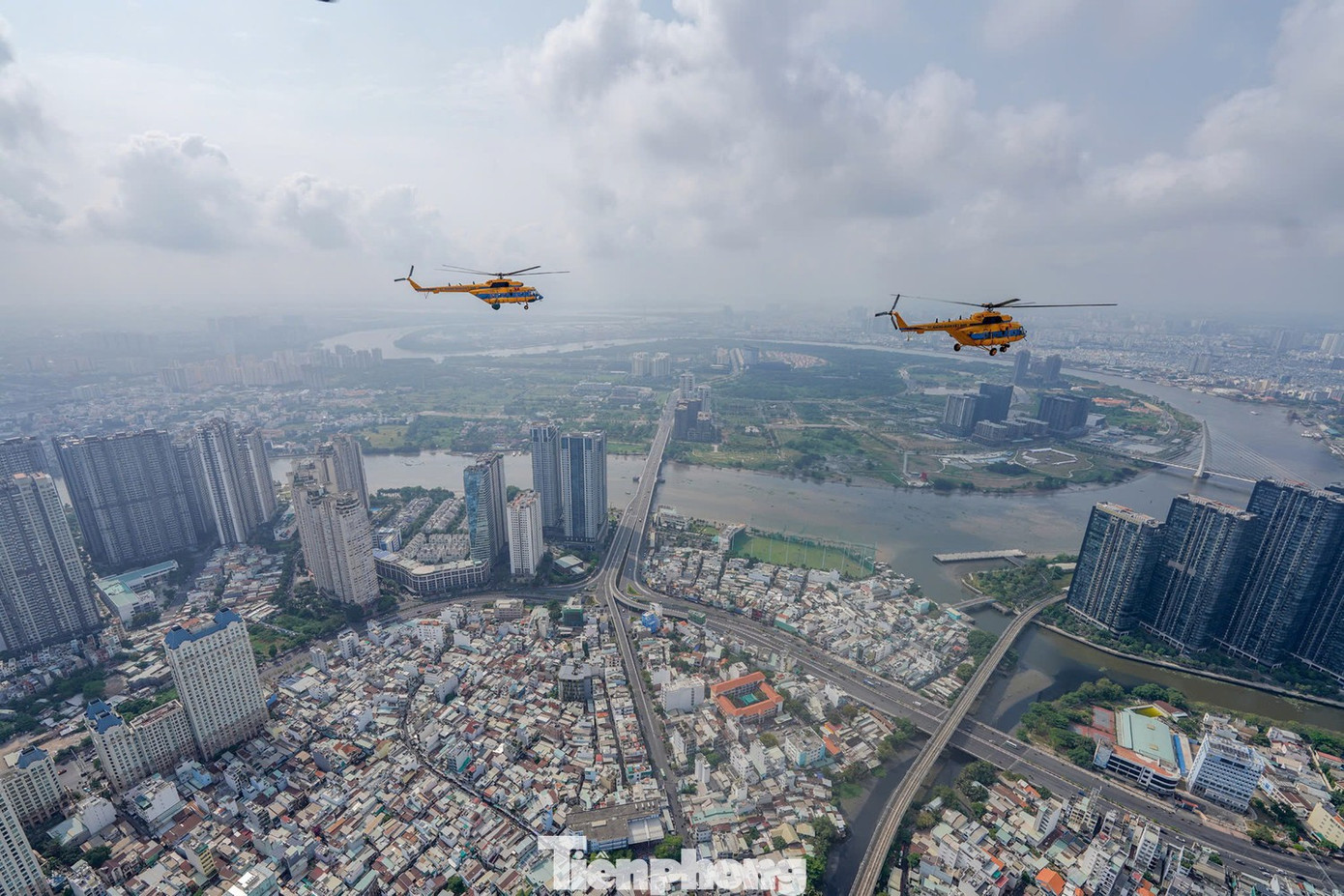
Ho Chi Minh City aims to develop a multi-modal transportation network, including modern roads, railways, and airports, after the expansion of its administrative boundaries. Illustration: Pham Nguyen
Looking ahead, Ho Chi Minh City envisions the development of aviation centered around Long Thanh International Airport, the upgrade of Tan Son Nhat International Airport (to 4E standard), the enhancement of Con Dao Airport, and the planning of two dedicated airports: Gò Găng Airport (3C grade) and Dat Do Airport (4C grade).
Public transportation will prioritize sustainability and environmental friendliness. The city plans to expand its metro network (extending Line 1 to Binh Duong and Line 3B to Dong Nai), implement the BRT system along the beltways, and introduce rapid buses and electric buses to alleviate congestion and pollution.
According to the Ho Chi Minh City Department of Construction, the unification of administrative boundaries has created an urgent need for an integrated regional infrastructure system. “The goal is to establish a multi-modal transportation network that seamlessly connects economic centers, industrial parks, seaports, and airports,” emphasized the representative.
Dr. Ngo Viet Nam Son, an urban planning expert, believes that following the merger, Ho Chi Minh City, as the central hub, will have more autonomy in fostering regional cooperation and connectivity. In particular, the development of a comprehensive logistics infrastructure is expected to boost the efficiency of goods and services flow, thereby accelerating economic growth.
The expansion of the city’s boundaries and the unification of the three localities have also brought about strategic infrastructure development imperatives for Ho Chi Minh City. A multi-modal “backbone” is essential to fully harnessing the potential of this mega-city of over 14 million inhabitants.
Architect Ngo Viet Nam Son asserts, “Ho Chi Minh City needs to simultaneously develop roads, expressways, railways, waterways, and aviation to ensure seamless connectivity with Binh Duong and Ba Ria – Vung Tau. This is not just about infrastructure; it’s about laying the foundation for regional economic development.”
“Launching the Construction of the Cổ Linh Interchange Underpass: A 750-Billion-VND Project Commencing in September 2025.”
The Hanoi City Transport Infrastructure Investment Construction Project Management Board (Transport Department) has proposed to the Department of Construction a plan to commence construction of an underground tunnel project at the Co Linh intersection to eliminate a long-standing traffic bottleneck. The total investment for this project is estimated at VND 750 billion.
The New Heart of Ho Chi Minh City: Saigon Marina International Financial Centre Opens Its Doors
Ho Chi Minh City unveils the iconic Saigon Marina IFC, a transformative development that underscores Vietnam’s ascent as a prominent financial hub in the region. This landmark project serves as a testament to the country’s thriving economy and its ambition to become a key player in the global financial landscape.
“Rethinking Land Valuation for Three BT Contracts in Thu Thiem”
The three construction investment projects: four main roads in the new Thu Thiem Urban Area, Thu Thiem 2 Bridge, technical infrastructure for the northern residential area, and completion of the North-South axis within the new Thu Thiem Urban Area will undergo a comprehensive review. This review will delineate boundaries, pinpoint locations, and determine the land area and land prices for the portions that have been allocated for land handovers or leases to investors as a form of payment.



















